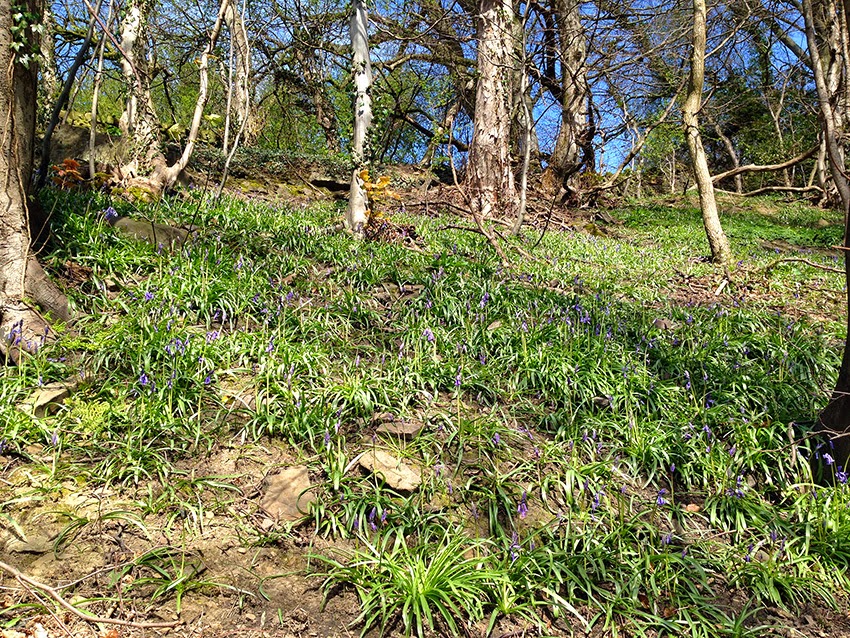We met at Hirst Wood car park in the sunshine, and watched Long-tailed, Great and Blue Tits as we waited for everyone to arrive. The weather was just about perfect for a spring walk, though the strong breeze made viewing birds high up in the trees a bit harder.
Wildlife Explorers!
No sooner had we entered the wood and we were hearing Nuthatches calling. It wasn't long before we saw one, the first of four we saw. These loud "mini woodpeckers" are very handsome birds, with blue-grey backs, orange bellies, and a cool stripe through the eye. They get their name through their habit of cracking open nuts with their dagger-like bills.
Watching a Nuthatch
We were trying to find birds not just by looking for them, but also by listening for their songs. We heard a lot of Blue Tits, Wrens, Blackbirds and Robins in the wood, but before long we heard a sweet, rich warble coming from over our heads. It was a male Blackcap. Blackcaps are summer migrants from warmer parts of Europe and Africa, but more recently some Blackcaps have been spending the winter in Britain. So the bird we saw in the wood may have flown just flown in from Africa, or spent all winter in our gardens.
We moved on, with the Otters finding noisy Jays and Mistle Thrushes. We stopped at the aqueduct end of the wood, to listen for birds. It was a bit windy here, but we were lucky to spot a pair a Stock Doves at what was probably their nest site in a nearby tree. Stock Doves look similar to Wood Pigeons, but are more closely related to the feral pigeons you see in towns are cities. Stock Doves live in fields in small flocks, and pair up in spring to build nests in holes in trees. They are often overlooked, and are possibly the prettiest pigeon or dove we have in the UK.
Stock Dove
We continued to the aqueduct, which led us to Dowley Gap Water Treatment Plant. We could see the Swallows and Sand Martins flying over the works from a distance - the first Swallows we'd all seen since last summer. They had been in southern Africa over the winter, and it was great to see them back. Sites like sewage works attract birds that feed exclusively on insects, and so are great for birds like Swallows, Sand Martins, Pied and Grey Wagtails, Wrens, Chiffchaffs, etc.
Over the canal and on to the river heading back and the Otters found a group of Mallard ducklings! There were eight ducklings in one family group. Most birds are still building nests or sat on eggs, but these Mallards had started early. The ducklings looked like they'd been out of the nest for around week already.
Finding the Mallard ducklings
Along the river we heard singing Chiffchaffs in the trees - calling their name "chiff-chaff-chiff-chaff". The river bank was coated in early flowers like Celandine, Bluebell, and Wood Anemone, and the scent of Wild Garlic.
Bluebells
Wild Garlic and Celandine
We also saw an early Orange Tip butterfly. It was a male, which has orange wing tips - females are all-white. A large shoal of small, or young, fish were swimming in the shallows. Unfortunately, none of us what these were. A definite gap in Airedale Otter knowledge! Perhaps something to do in a future event or quiz...
Orange Tip butterfly
At the weir we were greeted by a Grey Wagtail and soon found a pair or Dippers catching insects in the river. We watched as they flew out from the bank and plopped into the river, disappearing under water! Dippers can walk under water, gripping onto stones with their feet and catching the insect larvae. The Dippers were carrying the food back up the stream - as sure sign they have hungry young birds in the nest.
A great walk - thanks again for taking part.







No comments:
Post a Comment